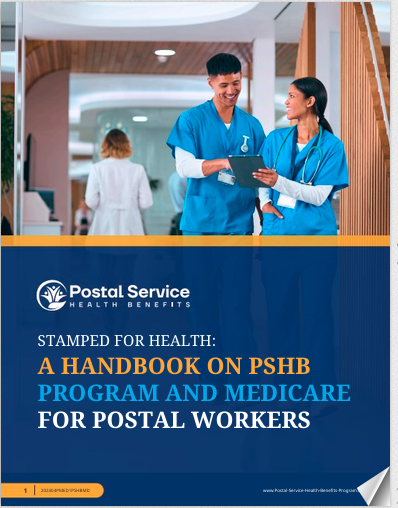Key Takeaways
-
Medicare Part C offers an all-in-one package, but its network restrictions and cost-sharing structures can leave you with unexpected out-of-pocket expenses.
-
As a postal retiree or worker enrolled in the Postal Service Health Benefits (PSHB) Program, understanding the trade-offs between PSHB plans and Medicare Part C is critical for ensuring you get the coverage you expect in 2025 and beyond.
Understanding Medicare Part C Basics in 2025
Medicare Part C, also known as Medicare Advantage, continues to attract interest in 2025 because it promises to bundle hospital, medical, and often drug coverage into a single plan. On the surface, the idea sounds appealing: convenience, coordination of services, and often extra benefits like dental or vision coverage.
However, while the idea of “all-in-one” is attractive, the reality is more complicated. Unlike Original Medicare, which allows you to see nearly any provider that accepts Medicare, Medicare Part C plans typically limit you to a specific provider network.
How Medicare Part C Differs from Original Medicare
In 2025, the most noticeable differences between Medicare Part C and Original Medicare include:
-
Provider Networks: Medicare Part C plans often use Health Maintenance Organizations (HMOs) or Preferred Provider Organizations (PPOs), meaning you may have to see specific doctors or hospitals.
-
Referrals: Some plans require referrals from a primary care physician before seeing a specialist.
-
Prior Authorization: Certain treatments, tests, or surgeries require approval in advance.
-
Out-of-Pocket Costs: While Part C may cap your annual expenses, it still involves copayments, coinsurance, and sometimes higher costs for out-of-network services.
Network Restrictions: A Major Consideration
When you enroll in a Medicare Part C plan in 2025, your choice of doctors and hospitals becomes limited compared to Original Medicare.
-
In-Network vs. Out-of-Network: Some plans offer no coverage outside of the network except for emergencies.
-
Location Boundaries: Many networks are geographically restricted. If you travel often or spend part of the year in a different state, you may find it difficult to access covered care.
-
Provider Changes: Networks can change from year to year, meaning a doctor you see now may not be available next year.
This can be especially important for postal retirees who may move after retirement or maintain multiple residences.
Prior Authorization Requirements
In 2025, Medicare Part C plans continue to use prior authorizations to control costs. Prior authorization means your doctor must obtain approval from the plan before you can receive certain services or medications.
-
Delays: Prior authorization can delay necessary care.
-
Denials: Some requests may be denied, requiring appeals.
-
Administrative Burden: Both patients and providers face more paperwork.
While PSHB plans may also require some preapprovals, Medicare Part C plans are generally much stricter.
Hidden Out-of-Pocket Costs
While Medicare Part C offers an annual out-of-pocket maximum (unlike Original Medicare without a Medigap policy), that cap only applies to services covered by the plan—and only for in-network care.
-
Copayments: You often pay a fixed amount for each doctor visit, specialist consultation, or hospital stay.
-
Coinsurance: Some plans require you to pay a percentage of the cost of services.
-
Non-covered Services: Services not covered by your plan (or out-of-network services) can result in significant costs.
Even though PSHB plans also include cost-sharing, they tend to have clearer structures and broader provider access compared to many Medicare Part C plans.
Prescription Drug Coverage Differences
Most Medicare Part C plans bundle Part D prescription drug coverage. However, the formulary—or list of covered drugs—varies widely between plans.
-
Formulary Changes: In 2025, Medicare Part D formularies can change annually, meaning drugs covered this year may not be covered next year.
-
Prior Authorization for Drugs: Many Part C plans require prior approval for expensive medications.
-
Tiered Pricing: Higher-tier drugs come with higher copayments or coinsurance.
Meanwhile, PSHB plans integrate prescription drug coverage through Medicare Part D Employer Group Waiver Plans (EGWPs), often providing more predictable and stable coverage.
Emergency Coverage Outside Your Service Area
Postal retirees who travel or split time between states must think carefully about Medicare Part C coverage. While emergency services are generally covered anywhere in the U.S., non-emergency care outside your service area may not be.
-
Emergency Definition: Only services defined as emergencies are covered out-of-network.
-
Urgent Care: Some plans include urgent care centers, but not all.
-
Routine Care: Routine doctor visits or specialist appointments may not be covered when you are outside your plan’s service area.
For postal workers and retirees who travel frequently, PSHB plans tend to offer more consistent nationwide coverage.
Appeals and Denials Are Common
In 2025, appeals and denials remain a common part of the Medicare Part C experience.
-
Initial Denials: Prior authorization denials can require multiple levels of appeal.
-
Appeals Process: Although you have the right to appeal, the process can be time-consuming and confusing.
-
Success Rates: Not all appeals succeed. If an appeal is denied, you may have to pay full price for the service.
Under PSHB, while there are still appeal rights, the processes tend to be more transparent and less frequent.
Plan Changes Every Year
Medicare Part C plans can change significantly from year to year, even for enrollees who stay with the same insurance company.
-
Benefit Adjustments: Copayments, coinsurance, deductibles, and out-of-pocket maximums can all increase.
-
Network Changes: Doctors and hospitals may leave the plan network.
-
Formulary Updates: Medications covered under Part D may be dropped or moved to more expensive tiers.
PSHB enrollees receive an Annual Notice of Change each fall, but in general, changes to PSHB plans tend to be less dramatic year-over-year.
Enrollment Windows and Restrictions
Understanding when you can enroll, switch, or disenroll from Medicare Part C is essential.
-
Initial Enrollment Period (IEP): A 7-month window around your 65th birthday.
-
Annual Enrollment Period (AEP): October 15 through December 7 each year.
-
Medicare Advantage Open Enrollment Period: January 1 through March 31 for switching to another Advantage plan or back to Original Medicare.
If you miss these windows, you could be locked into your plan for the rest of the year unless you qualify for a Special Enrollment Period.
PSHB enrollment has its own timelines, typically running from November to December each year.
Comparing PSHB and Medicare Part C Coverage
When weighing PSHB plans against Medicare Part C options, it’s crucial to consider your own needs:
-
Provider Flexibility: PSHB plans often allow you to see more providers nationwide.
-
Cost Predictability: PSHB plans may offer more consistent out-of-pocket structures.
-
Ease of Access: PSHB plans generally have fewer administrative hurdles.
-
Prescription Stability: PSHB-integrated drug plans may offer better long-term formulary consistency.
Each year, carefully reviewing your Annual Notice of Change and evaluating whether a Medicare Part C plan or a PSHB plan suits you best is vital.
Why a Careful Review Matters Every Year
In 2025 and beyond, Medicare Part C’s complexity requires annual attention. You need to:
-
Review any network changes.
-
Verify whether your doctors and hospitals are still covered.
-
Check changes in cost-sharing and out-of-pocket maximums.
-
Confirm whether your prescription drugs remain covered.
Postal retirees and workers should also revisit their PSHB options annually, especially if their healthcare needs or living situations change.
Making the Best Choice for Your Future Healthcare
Medicare Part C can be an excellent fit for some, but it’s not always the ideal match for every postal worker or retiree enrolled in PSHB. Knowing the fine print and reassessing your needs every year will ensure you get the coverage you expect without unpleasant surprises.
If you have questions about how to best combine Medicare with your PSHB coverage, or if you are unsure which option suits your retirement healthcare needs, you can contact a licensed insurance agent listed on this website for personalized help.






